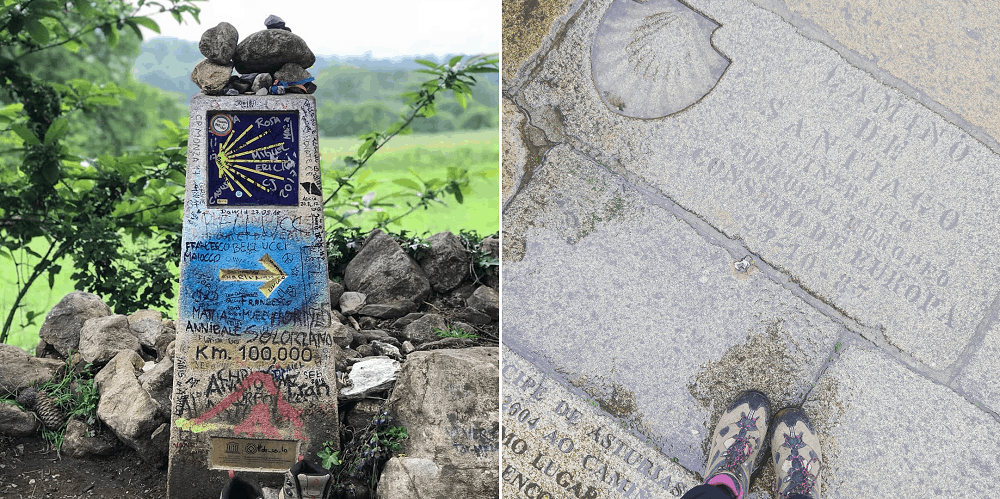My (Not So) Zero Waste Camino
Back in April, I headed off to Europe to walk across Spain along the Camino Frances, from St Jean Pied-de-Port in France to Santiago de Compostela in the north-west corner of Spain. Over 35 days I walked 800km. I talked about what I packed before I left; now I’m back and the memory of those sore, sore feet is a little more distant, I thought I’d tell you how it went.
There’s so much I could say about the meaning of the experience, the people I met along the way and the community we grew, and my inner reflections… but this space is about zero waste and plastic-free living, minimalism and treading lightly.
Whilst my experience was a lot greater than learning about different recycling systems and wrestling in Spanish about not wanting a plastic straw, this is where I’m going to keep the focus. Plus, surely you all want to see some holiday recycling bin snapshots?!
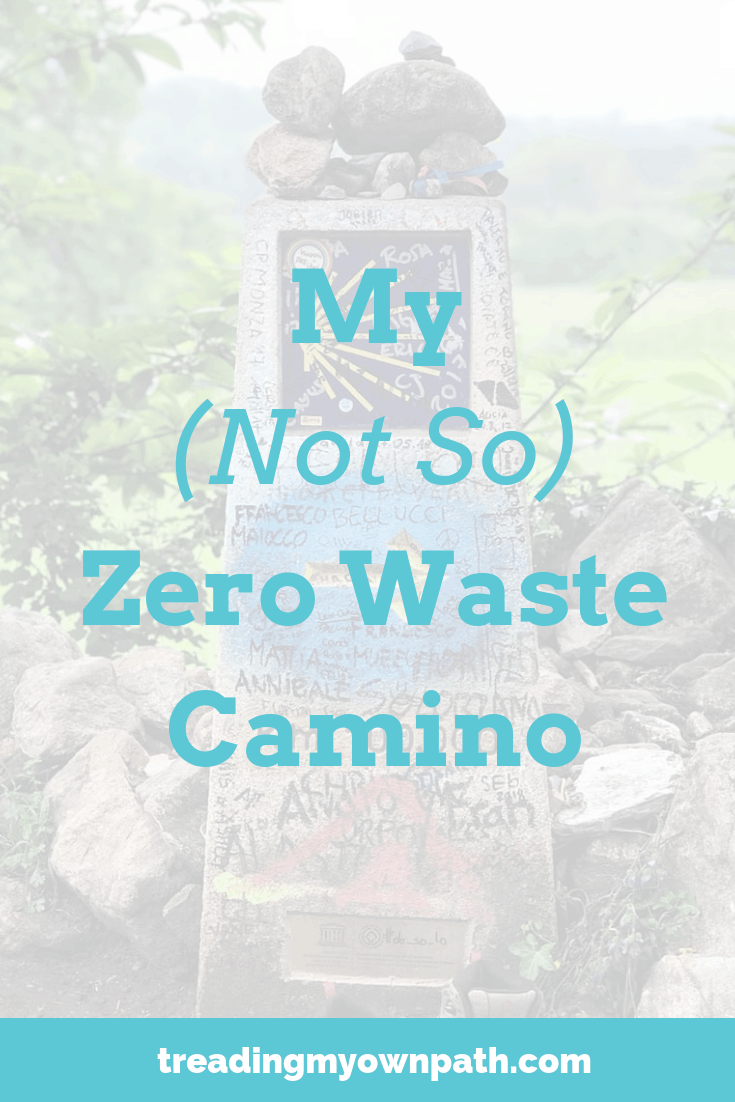
Minimalism on the Camino
Packing light is something I’ve got pretty good at over the years, and all up my pack and everything I took (including the clothes I wore, but not my hiking boots) weighed less than 6kg.
Many of the people I met packed more than they needed, and ending up posting stuff ahead to collect later – or got their bags sent ahead as the weight was too much. I wanted to be able to carry my own bag.
I had intended to post ahead anything I didn’t need, but in the end, there wasn’t anything.

That’s not to say my packing was perfect. I definitely did not realise it was going to be so cold! There was snow on the second day, and I only had one long-sleeved top as well as my jacket. Not only that but when I hit sunnier climes, I wanted to wear long sleeves in the sun to stop my arms burning. Black wasn’t ideal for the hot sun.
After wearing said top for 8 hours, it needed washing (clearly). I could make it last a couple of days, but eventually it had to come off!
On day 3 I found an abandoned scarf (yes, it was abandoned, I promise) which probably saved me from freezing to death. Around day 20 I went and purchased some cycling sleeves (literally arm covers) – they can be worn with t-shirts to protect against the sun and are white, not black.
Did I pack anything I didn’t need? I could have got away with one pair of shorts, rather than two. I didn’t wear my vest top much. But these things were so light that it wasn’t the end of the world carrying them.
Plastic-Free on the Camino
I’m sure you know that I don’t buy things packaged in plastic. But when these things are offered to me, it turns out that the Camino had some different rules to everyday life.
I don’t believe in changing rules when you go on holiday. For me it is important to do what I can all the time. But there’s something different about being kilometres from the nearest town, exhausted and hungry, with sore shoulders and aching feet and the beginnings of blisters, and someone offering up chocolate packaged in plastic.
It should be noted that chocolate is my go-to comfort food. I ate that chocolate. Oh yes.
The other thing that I used was those individual plastic jam portions. Those ones I cringe about. In Spain, most places open fairly late in the morning, and there might only be one place open early in the morning to cater for peregrinos (people walking the camino). These places, almost without exception, offered dry (stale?) bread, or occasionally toast, and jam portions.
I don’t even like jam very much. But when this is the only opportunity for breakfast, stale bread alone just won’t cut it, and the next town is 8km away, you suck it up and use the damn jam portions.
Okay, maybe you don’t. But I did.
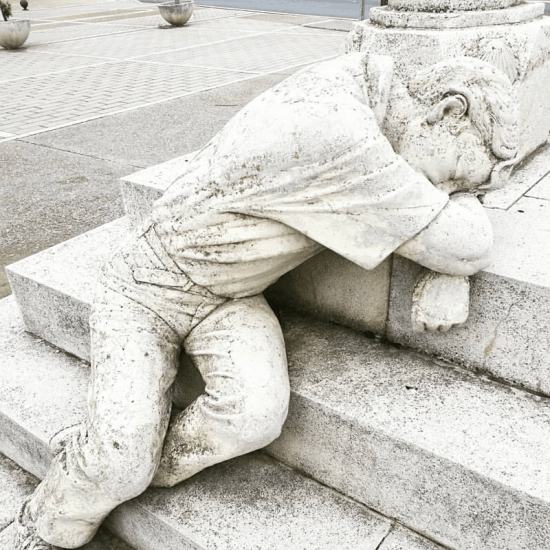
A couple of times there actually wasn’t anywhere open for breakfast, and I did have to walk 8km to find somewhere. Walking that far on an empty stomach (when you walked 20km the day before, and the day before that, and the day before that) isn’t much fun.
Sometimes it’s not obvious that nowhere will be open until that morning, so there’s no chance to buy snacks in advance. One thing you learn on the Camino, is that when there’s the opportunity to eat (and likewise, use the bathroom) take it because you don’t always know when the next opportunity will come.
In hindsight, what I’d do next time to avoid the jam is buy avocados along the way. They aren’t available in every town, but frequent enough, I think. I did this sometimes (and you have no idea how much avocado envy I’d get from fellow peregrinos when I whipped out my fresh avocado) but if I went back, I’d ensure I was always carrying one. (I’d use half, then carry the other half and use it the next day. They lasted fine.)
One other plastic-packaged thing I bought: medical supplies. Blister plasters (oh Compeed, thank you for everything you did for me) and ibuprofen, specifically. It was a matter of purchasing them and finishing the walk, or not purchasing them and not.
Zero Waste on the Camino
I took my reusables (water bottle, cup, container and spork, and an Onya bag) and all of them were very useful. The container was great for bulk snacks, leftovers, and water on the really hot days (it’s leakproof). The Onya bag was brilliant for buying snacks – fruit, nuts, potato chips (Spain sells bulk potato chips! Heaven!).
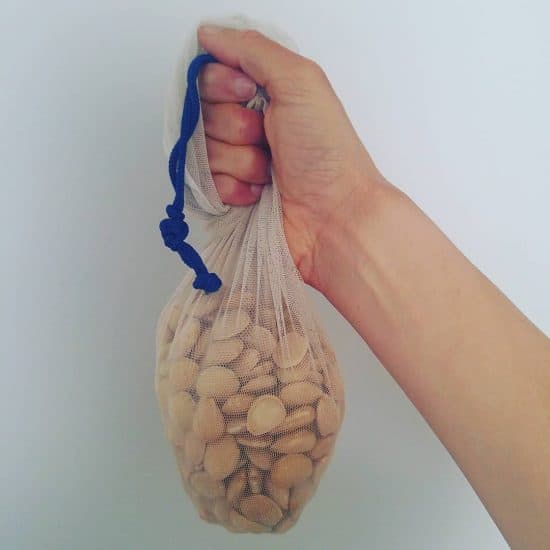
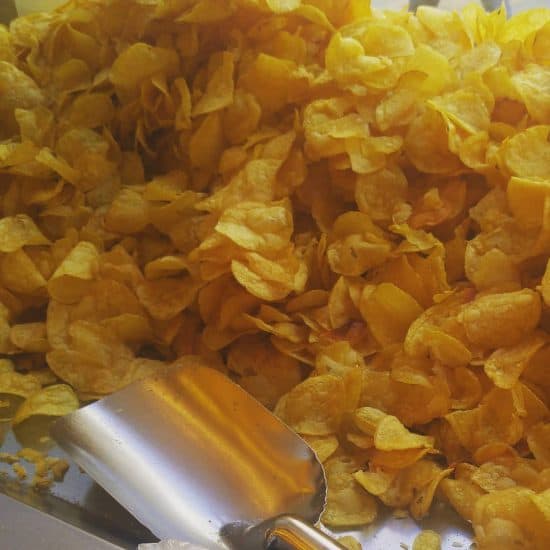
There wasn’t much food waste because cooking options are limited and it is easier (and fairly cheap) to eat the peregrino menus. Food waste was limited to peels, skins and rinds.
Composting was next to impossible. Going from place to place meant there was no time to figure out if there were composting options. The odd banana peel or piece avocado skin could be thrown into the undergrowth well off the path, but if there was no undergrowth, just dumping on the path wasn’t an option. As much as it pains me to put anything in the bin, it happened.
Recycling was fairly easy, and even the small villages had central recycling banks for paper, plastic and metal. Sometimes I’d have to carry things for a day or two, but eventually I’d find somewhere.


Plant-Based Eating on the Camino
If you want to walk the Camino as a vegan, it requires some serious forward planning, the commitment to cooking most of your own food – and bringing your own utensils – and (I’d guess) the ability to speak a little Spanish.
Even as a vegetarian, it is tricky. And you have to LOVE eggs.
I’d already decided that I was happy to eat eggs on the Camino before I left (tortilla de patatas, a potato omelette, is pretty much a Spanish staple) but by day 3 I’d decided to eat fish if there were no vegetarian options. When you’re walking that many kilometres every single day, asking the waiter to remove the tuna and egg from a salad and being left with only the lettuce, tomato and raw onion just isn’t going to cut it.
If you’re prepared you can cook beans and lentils and these are fairly easy to find dry in bulk. I wasn’t prepared. Lots of vegans take huge amounts of pre-packaged vegan food with them – and that wasn’t an option for me, either. Nut/soy milk is virtually non-existent.
Saying that, there are vegetarian and vegan options, particularly in the bigger cities. The Vegetarian Way has some details of vegetarian options, but some listings were permanently closed or only offered dinner for residents (not so helpful at lunchtime). I became a little obsessed with hunting down falafels (!) and found a caravan selling the best vegan burgers in the middle of a woodland, so there were definitely some highlights.
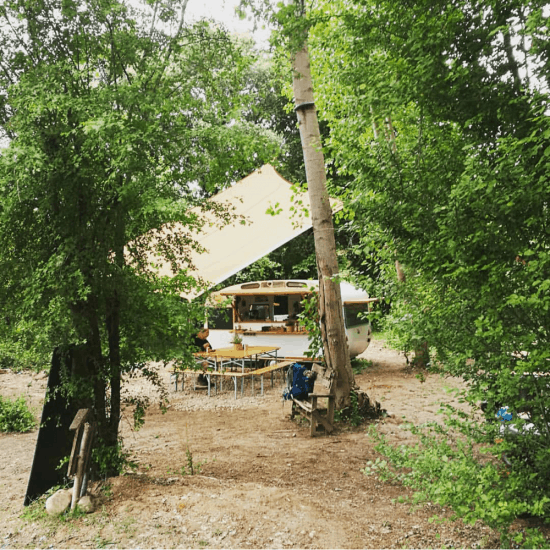
My (Not So) Zero Waste Camino: Lessons Learned
I don’t know really these are lessons learned, or whether they are simply things I already knew that were reinforced.
1. Zero waste and plastic-free living takes prior planning.
At home, we develop habits and incorporate this way of living into our daily routine. When we are away, there is no daily routine and so we have to research and plan ahead. Sure, I could have taken the time before I left to research composting options, or look up much more thoroughly the plant-based meal options.
In the end, I ran out of time, and I did the best I could. That’s not to say it isn’t possible, but it wasn’t possible for me, this time.
2. Everyone has limits to their time and energy.
I’ve talked about limits to time and energy before, but nothing drains you like walking 20km a day for 14 days in a row without stopping (it was 2 weeks before I took my first rest day). By the end of the day, climbing the stairs to get to my bed was hard enough (why oh why do they give the ground floor rooms to people who arrive first? They are fitter – make them climb the stairs!!!).
I know at the start of the trip I wouldn’t have been able to stand and cook a meal, let alone go to the shops and buy all the things I needed first. We can only do the best we can, and nothing tested my limits and showed me the absolute truth in this more than this walk.
3. Doing what we can is better than doing nothing.
I may have used plastic jam portions more than I care to remember, but I also refused plastic bags and straws, and purchased most of my snacks in bulk (except chocolate, but I made sure that was plastic-free).
I may have eaten fish and eggs, but I also tried to support every vegan/vegetarian cafe that I came across – and told my various vegetarian friends I met along the way about them, too.
To the purists, that may not be enough. But I’m not a purist. As much as I’d like to be perfect, I’m imperfect. I’m passionate about two many things to single-mindedly pursue the perfection of one. I do the best I can. I may have let a few things slide on the trip, but I didn’t let everything slide. It was a great learning experience, and I’m willing to admit my faults.
If I ever do a trip like this again, I promise I’ll come up with a plan to avoid those damn individual jam portions.
Now I’d love to hear from you! Do you have any questions about how I dealt with certain scenarios? Do you have insights from your own experience with a similar trip? Do you have any comments, ideas or anything else about any aspect of the trip? I’d love to hear your thoughts so please share below!
[leadpages_leadbox leadbox_id=1429a0746639c5] [/leadpages_leadbox]

